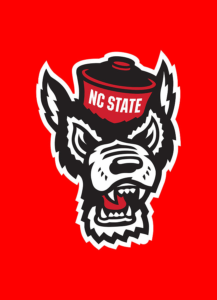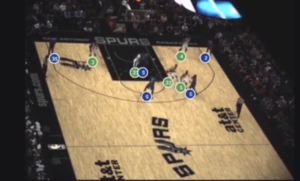
College Teams Closely Watching How Pro Teams Adopt Analytics

(Piotr Piatrouski/Shutterstock)
Professional sports teams have been taking advantage of an array of analytics and AI techniques for some time. Now that the technology and applications are becoming more well understood, college athletics are starting to try their hand.
One of the collegiate athletic programs currently rolling out advanced analytics is North Carolina State University. Assisted by the analytics powerhouse SAS, which CEO Jim Goodnight co-founded on the university’s Raleigh campus in the 1970s, the Wolfpack is adopting analytics across its athletics programs.
The university is taking a holistic approach to its data and analytics program, according to Colin Hargis, NC State’s senior associate athletic director for marketing and ticket services.
“About four or five years ago, we decided we have to get smarter with our approach,” Hargis tells Datanami. “We have a finite number of days and resources and people, so [we asked] how can we become more strategic.”
A (Wolf)pack of Analysts
There are three areas NC State is focusing on with its data and analytics strategy. The first one, which has been underway for a while, is improving marketing and outreach efforts involving fans, students, and alumni. Beyond that, the university is looking to boost recruitment efforts for the entire athletics department. Lastly, it’s in the early stages of introducing analytics to a handful of teams to improve on-field performance.
All three of NC State’s focus areas for analytics–marketing and outreach, recruitment, and on-field analytics–are housed under a centralized analytics hub. The idea is to centralize not only the storing of the sports-related data, but also the data engineering and analytics expertise that’s required to make use of it.
“It’s changing the mindset to be data first,” Hargis says. “We all love Excel. We can do some formulas and manipulate some data. That’s how we’ve done a lot of stuff. As we look to create this analytics hub, we have this vision of NC State athletics where we don’t want it to be specifically siloed under a unit. So it allows us to be a little bit more premeditated instead of just that straight reactionary ‘Hey, let’s go to our trusty Excel spreadsheets and crunch the numbers.’”
On the marketing and outreach side of things, the college is working with the SAS Collegiate Athletics Insights package to implement a digital strategy. Getting a better handle on social media and how it can be utilized to improve outreach to students, fans, and alumni is a big part of that program, Hargis says.
“We’re actually in the process of introducing a digital strategy unit within our athletic department, and a key position of that is going to be analyzing our social media campaigns and what we’re doing there so we can start to make better data-driven decisions of where to post, how to post, when to post, the type of content,” he says. “I think it’s a little bit of the notion of putting the science behind the art, the creative art and the art of engagement.”
In terms of recruiting, NC State is looking to get smarter about how it tracks high school student athletes and they would fit in as a member of the Wolfpack. To that end, it’s looking to SAS to help build models and to track the journeys that prep athletes take in their athletic careers.
“With recruiting, we’re looking at it from a variety of perspectives,” Hargis says. “We’re trying to analyze the student athletes or the high school kids that historically were ranked or came out with certain star rankings and things that nature. How did they progress through their college recruitment process? Ultimately, what was the school that they chose? How did they perform in in college? And then did that translate to a career in the NFL, or what type of career in the NFL? Were they an all-conference athlete? Were they an All-American?”
On Field Performance
The third area of focus–bringing advanced analytics to the actual NC State teams to help improve their performance–is the newest and arguably has had the least impact up to this point. That is partly by design, as Hargis and his colleagues in the athletics department want to be sure they get it right.
“We know we need to walk,” Hargis says. “That’s why strategically we picked a couple of programs on the internal side to start working with a couple of teams. We don’t want to overpromise and under deliver.”
In early 2020, Hargis and his colleagues began introducing the SAS analytics software to a handful of teams, specifically the football team and the men’s and women’s basketball teams. The goal is to notch some early victories with relatively low hanging fruit before embarking upon more advanced–and more challenging–use cases.
COVID-19 didn’t help the roll-out of on-field analytics. But ultimately, the idea will be to crunch the performance data to find interesting nuggets of information that could potentially help the team’s on-field performance. For example, by analyzing shot selection for the women’s basketball team, Hargis and his team could help them identify tendencies that coincide with scoring more points.
Many college sports teams are already using some type of software, particularly in the more prominent sports like football, basketball, and baseball. In that regard, Hargis and his colleagues want to be thoughtful in how they roll out new software.
“We want to add tools to their toolbox. We can’t force anything down their throat,” Hargis says. “Coaches have their ways of how they want to analyze their on-field performance. But what we want to be able to do is add tools to the toolbox to help them try to identify either just that competitive edge or something that’s slightly different.”
The on-field aspect of NC State’s analytics journey is still in the early stages. According to Dan Axman, SAS’s senior analytics advisor for collegiate and professional sports, most college sports programs around the country are trailing their professional colleagues.

Stats Perform can glean player position data from TV feeds using AutoStats, which uses deep learning computer vision algorithms and was introduced in 2019
“I think it’s fair to say that the collegiate athletics industry is a little bit behind professional sports,” says Axman, who previously worked with the Miami Dolphins and Florida Marlins. “But there are some further ahead of the curve than others. Obviously, NC State is moving very quickly to be a leader in using data and analytics.”
A Revolution in Sports Analytics
In professional sports, many teams are starting to adopt highly sophisticated programs that analyze the movement of players to determine how well they’re playing. Stats Perform has been at the cutting edge of this technology by deploying sophisciated sensors in NBA arenas.
But now, according to Stats Perform chief scientist Patrick Lucey, the capability to perform deep learning on sports video taken from TV broadcasts has the potential to revolutionize the use of analytics in sports, including college athletics.
“A really good example is in basketball, where the last 10 years we’ve had tracking data in the NBA,” Lucey tells Datanami. “What about college basketball? We haven’t had that data exist in college basketball because in-venue solutions haven’t been able to scale, meaning that, if I’m making a decision in the NBA of a future player, I’m only going on box score. I’m only going on play-by-play data. Why can’t I have the same data that I have in NBA in college?”
The short answer is that college sports programs now do have access to that data (although they have to be able to pay Stats Perform for the best data). It makes sense that, as the technology matures and more teams avail themselves of the data, that this approach will spread.
“Professional teams see the value there. College teams see the value there,” Lucey says. “this technology is getting better and better, and so that should trickle down and really should democratize data and should democratize performance analysis.”
The next 10 years are shaping up to be a period of rapid adoption of analytics in college sports, as the technology improves and becomes more affordable. That bodes well for programs like NC States’ that are making the investment in data and analytics now. While the pros are more advanced at the moment, college athletic directors are paying close attention.
“We can idea-generate off of that,” Hargis says. “We might not have every resource at a pro team does or an NBA team does, but how can we potentially audible off of what they’re doing? Are there aspects of that that we can strive towards?
“I think that’s the exciting part,” he continues. “Some of the initial ideas that we’ve had, have been almost copycat off some of the other pro models and other initiatives that have already been done. We’ve said, hey that can apply to us. So let’s see if we can get that in place.”
Related Items:
We’re In the Moneyball 3.0 Era. Here’s What It Means for Live Sports
Deep Learning Is About to Revolutionize Sports Analytics. Here’s How
Today’s Baseball Analytics Make Moneyball Look Like Child’s Play
Editor’s note: This story has been corrected. Dan Axman of SAS did not prevoiusly work in analytics with the Marlins and the Dolphins. Datanami regrets the error.


























